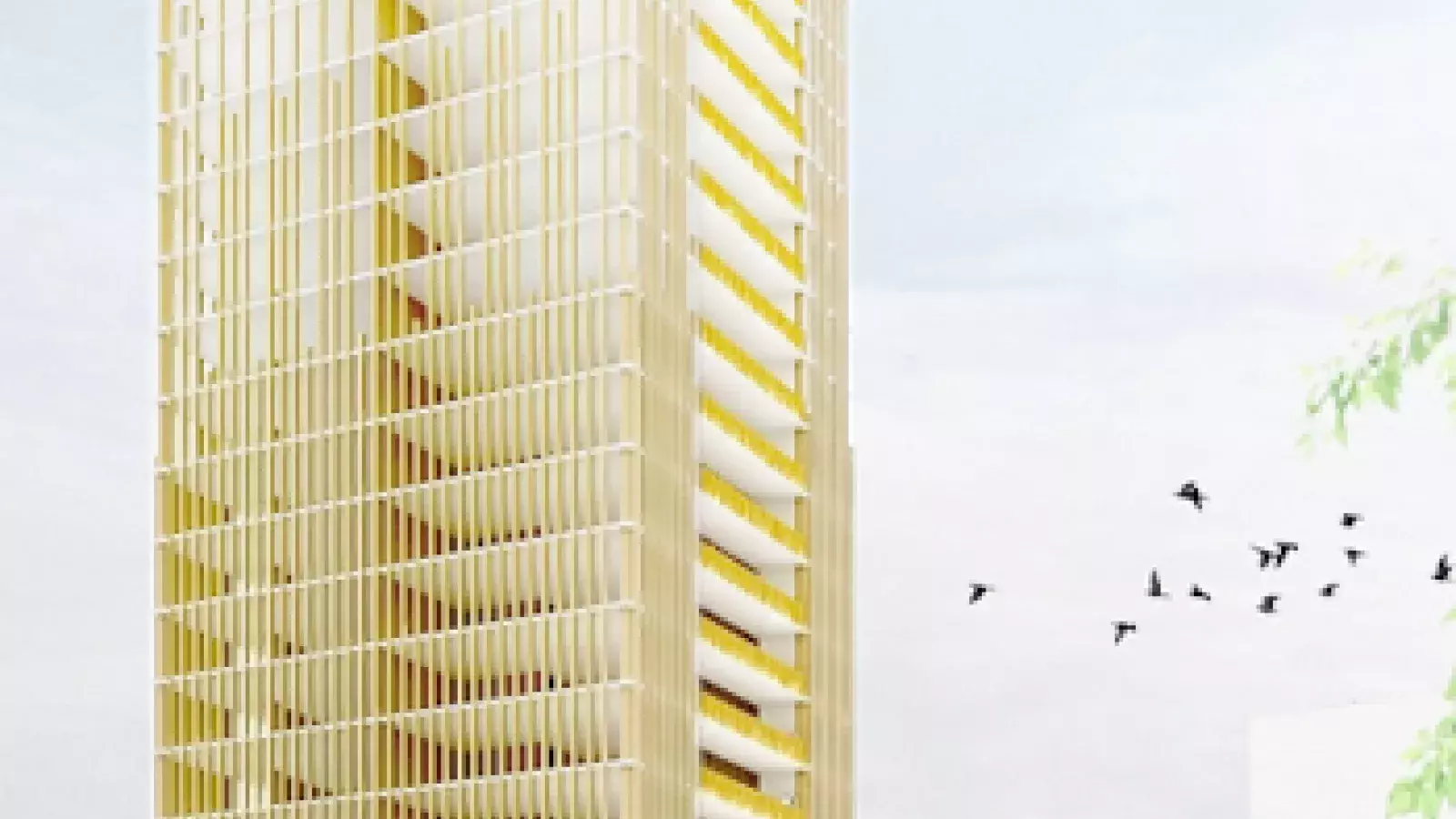The home building industry is a hugely important sector of our economy, and it’s important to always look for ways to innovate and improve. While change can be a slow, arduous process with potentially substantial initial costs, new technologies and ideas can add value and lead to even better home building solutions. In this rapidly urbanizing world, it’s critical to look for progressive new ways of building safe, affordable and environmentally-friendly buildings.
In February 2012, a 240-page report titled The Case for Tall Wood Buildings by Vancouver architect Michael Green and engineer Eric Karsh was released which advocates for building highrise wood buildings as tall as 30 storeys. Michael Green explains, “To slow and contain green house gas emissions and find truly sustainable solutions to building, we must look at the fundamentals of the way we build – from the bones of large urban building structures to the details of energy performance. We need to search for the big picture solution of today’s vast climate, environmental, economic and world housing needs.”
As noted in the study, the buildings would feature engineered wood products including cross laminated timber (CLT), laminated veneer lumber and laminated strand lumber. With new advances in wood technology, these buildings would be fire resistant, earthquake proof, cost-competitive and built in a fraction of the time compared to their concrete and steel counterparts. The study also introduces a new construction model developed by Green and Karsh called “Finding the Forest Through the Trees” (FFTT).
“FFTT is a unique tilt-up system that effectively balloon-frames Mass Timber panels in a cost effective and simple manner… .” The floors, walls and buildings’ core are designed using Mass Timber panels with engineered wood columns (up to 12 storeys), and steel beams and ledger beams integrated into the Mass Timber panels will support the floors. It’s an adaptable system across many building types, scales and locations and can be installed quite quickly.
According to Green, mass timber offers a safe, economical and environmentally friendly alternative for tall building structures. “Concrete production represents roughly 5% of world carbon dioxide emissions, the dominant green house gas. In essence the production and transportation of concrete represents more than five times the carbon footprint of the airline industry as a whole.”
This new generation of building will be introduced to BC with a 10-storey Wood Innovation and Design Centre in Prince George. It is expected to be the tallest wood building of its kind in North America and possibly the world, and is slated for completion in 2014. If successful, this test case will serve as a benchmark, and could revolutionize the building industry. With a new engineered wood building industry and an updated BC Building Code (we’re currently restricted to 6 storey high wood frame structures), we could see a new built-form changing the skyline of our urban centres.
This new building technology could revolutionize the way we build mid-rise and tall buildings around the globe. The key challenge of course, will be market perception. With the “leaky condo crisis” and our wet climate, there’s definitely a view that wood buildings are less desirable and overcoming those perceptions will be a significant challenge.
Cameron McNeill



